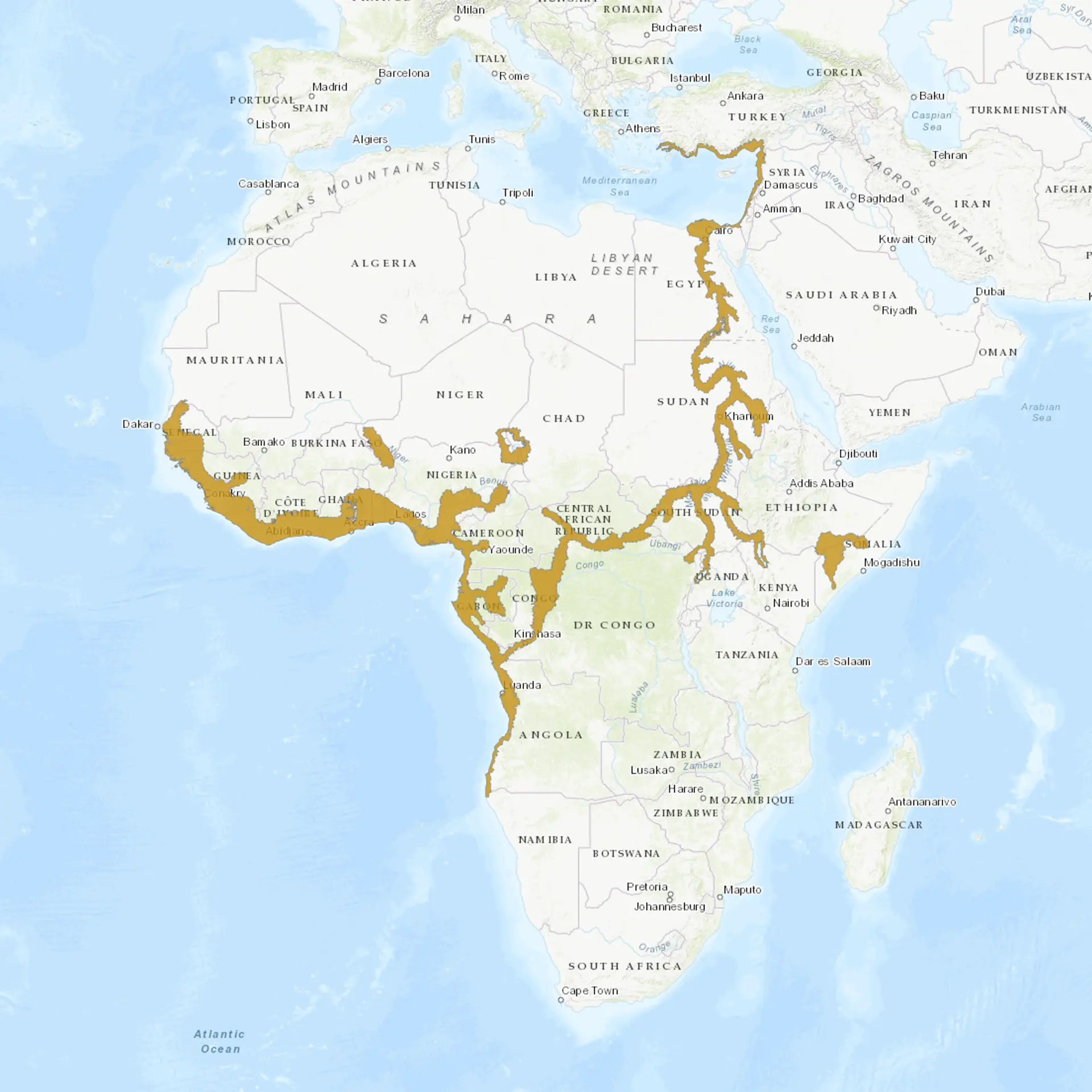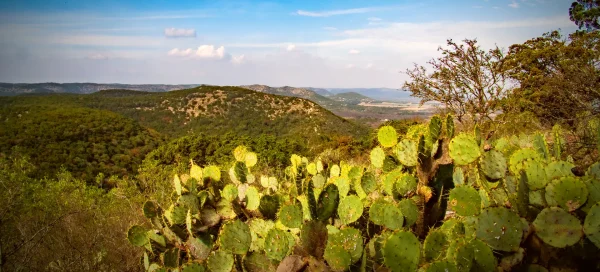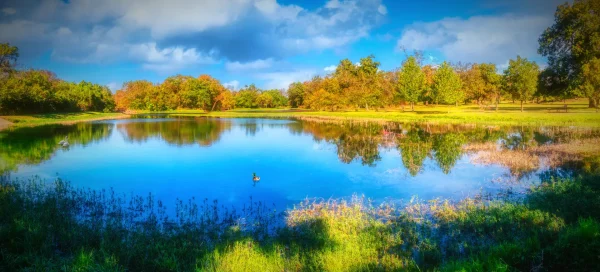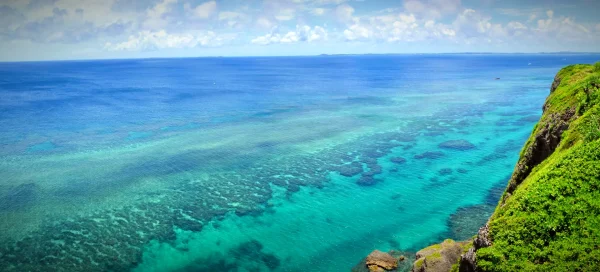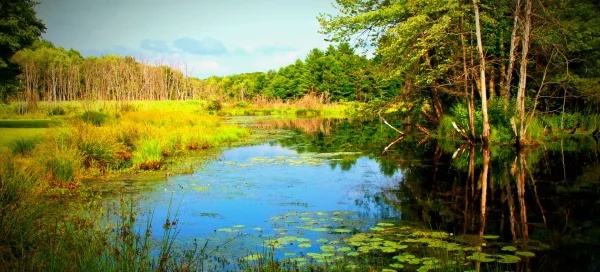Overview
The African softshell turtle, also known as the Nile softshell turtle, is a large freshwater turtle native to Africa. It is characterized by its flattened, leathery carapace and elongated neck, which distinguish it from other hard-shelled turtles. These turtles are primarily aquatic and are found in rivers, lakes, and swamps, where they spend most of their time submerged. They are known for their aggressive nature and can deliver a powerful bite if threatened.
African softshell turtles are excellent swimmers, using their webbed feet to propel themselves swiftly through the water. Their soft, pliable shell allows greater flexibility and speed underwater, aiding hunting and evading predators. They have a highly varied diet, consuming fish, amphibians, crustaceans, and occasionally plant material. These turtles play a crucial role in their ecosystems by controlling fish and invertebrate populations and contributing to the overall health of aquatic habitats.
Breeding typically occurs during the rainy season when water levels are high. Females come ashore to lay their eggs in sandy or muddy banks, digging nests to bury their clutches. The incubation period for the eggs varies depending on temperature but generally lasts around two to three months. Hatchlings are independent from birth and must fend for themselves against numerous predators.
Taxonomy
Kingdom
Phylum
Class
Order
Family
Genus
Species
Type
Current distribution:
African softshell turtles are widely distributed across sub-Saharan Africa and parts of North Africa. Their range extends from the Nile River basin in Egypt and Sudan to the rivers and lakes of West and Central Africa. They are also found in the freshwater systems of East Africa, including the Great Rift Valley lakes. This extensive distribution reflects their adaptability to various freshwater environments.
Despite their broad range, local populations may decline due to habitat destruction, pollution, and hunting. In some areas, these turtles are captured for their meat and shells, used in traditional medicine and as souvenirs. Conservation efforts are needed to address these threats and ensure the long-term survival of African softshell turtles. Protected areas and wildlife reserves play a crucial role in safeguarding their habitats.
Physical Description:
African softshell turtles have a distinct, leathery carapace that lacks the hard scutes found on other turtles. Their shell is olive to dark brown, often with dark spots or mottling. They have a long, tubular snout and nostrils at the tip, allowing them to breathe while mostly submerged. Their limbs are fully webbed, with three claws on each front foot, aiding in swimming and digging.
Adult males are generally smaller than females, with males reaching about 18 to 24 inches (45 to 60 cm) in carapace length, while females can grow up to 32 inches (80 cm). Males typically weigh between 33 to 44 pounds (15 to 20 kg), and females can weigh up to 88 pounds (40 kg). Their lifespan in the wild is estimated to be around 25 to 50 years, depending on environmental conditions and threats. They can live longer in captivity due to the absence of predators and a consistent food supply.

Lifespan: Wild: ~50 Years || Captivity: ~60 Years

Weight: Male: 33-44 lbs (15-20 kg) || Female: 44-88 lbs (20-40 kg)

Length: Male: 18-24 in (45-60 cm) || Female: 24-32 in (60-80 cm)

Top Speed: 15 mph (24 km/h)
Characteristic:
Native Habitat:
African softshell turtles are found in various freshwater habitats, including rivers, lakes, swamps, and marshes. They prefer slow-moving or still waters with soft, muddy or sandy bottoms, ideal for burrowing and foraging. These turtles are highly adaptable and can tolerate various environmental conditions, from brackish waters to temporary pools that form during the rainy season. Their ability to breathe through their skin and cloaca allows them to stay submerged for extended periods.
They are primarily aquatic but will come ashore to bask in the sun or lay eggs. During the dry season, when water levels drop, African softshell turtles may burrow into the mud to avoid desiccation. This estivation behavior helps them survive periods of drought and extreme temperatures. Their broad distribution across Africa includes Egypt, Sudan, Nigeria, and Cameroon.
Biomes:
Biogeographical Realms:
Diet:
Diet & Feeding Habits:
African softshell turtles are opportunistic carnivores with a diet that primarily includes fish, amphibians, and crustaceans. They use their sharp jaws and powerful bite to catch and consume their prey. In addition to animal matter, they occasionally eat plant material, such as aquatic vegetation and fruits that fall into the water. Their hunting strategy often involves ambushing prey by lying motionless on the riverbed and striking swiftly when an unsuspecting animal comes close.
These turtles are also known to scavenge, feeding on carrion when available. Their diet can vary based on availability and season, adapting to the changes in their environment. During the dry season, when food is scarcer, they may consume more plant material to supplement their diet. African softshell turtles play a crucial role in their ecosystems by helping to control the populations of their prey species.
Mating Behavior:
Mating Description:
African softshell turtles have a polygynous mating system, where males compete to access females. Mating typically occurs during the rainy season when water levels are high, providing suitable conditions for egg laying. Males use elongated necks and sharp claws to court and grip females during copulation. After mating, females come ashore to dig nests in sandy or muddy banks, where they lay between 20 to 100 eggs.
The eggs are buried and left to incubate for about two to three months, depending on temperature and environmental conditions. Hatchlings emerge and go to the water, where they must quickly learn to fend for themselves. The survival rate of hatchlings is low due to predation by birds, mammals, and other reptiles. Females may lay multiple clutches of eggs during a single breeding season.
Reproduction Season:
Birth Type:
Pregnancy Duration:
Female Name:
Male Name:
Baby Name:
Social Structure Description:
African softshell turtles are generally solitary, coming together only during the breeding season. They are territorial animals, with individuals defending their home ranges from intruders. Juveniles and subadults may form loose aggregations in favorable feeding areas but typically disperse as they mature. Adult males are often more aggressive, especially during the breeding season when competition for mates is high.
Communication between individuals includes visual displays, body postures, and sometimes vocalizations. Aggressive encounters can involve biting, striking, and chasing. Social interactions are primarily related to mating and territorial defense. The solitary nature of African softshell turtles helps reduce competition for resources in their often challenging environments.
Groups:
Conservation Status:
Population Trend:
The population of African softshell turtles is declining across much of their range. Habitat destruction, particularly the drainage of wetlands and pollution of water bodies, poses significant threats. Additionally, hunting for their meat and shells contributes to their declining numbers. In some regions, they are also captured for the pet trade, further impacting wild populations.
Conservation measures are crucial to halt and reverse these declines. Protected areas and legal protections can help safeguard critical habitats and reduce hunting pressure. Research is needed to better understand their population dynamics and their specific threats. Public education and community involvement are also important for the successful conservation of these turtles.
Population Threats:
Habitat destruction, including wetland drainage and pollution, is a major threat to African softshell turtles. Pollution from agricultural runoff, industrial waste, and plastic debris contaminates their habitats and food sources. Hunting for their meat and shells, as well as capture for the pet trade, also significantly impacts their populations. Climate change, resulting in altered rainfall patterns and increased droughts, further threatens their habitats and survival.
In some areas, invasive species such as non-native fish and plants compete with or prey upon African softshell turtles. Human encroachment and development near water bodies increase the risk of habitat fragmentation and degradation. Conservation efforts must address these threats through habitat protection, pollution control, and sustainable management practices. Collaboration with local communities is essential for effective conservation.
Conservation Efforts:
Conservation efforts for African softshell turtles include the establishment of protected areas and wildlife reserves. Legal protection against hunting and trade in several countries helps to reduce direct threats. Habitat restoration projects aim to rehabilitate degraded wetlands and improve water quality. Research programs focus on understanding their ecology, behavior, and population dynamics to inform conservation strategies.
Community-based conservation initiatives engage local people in protecting and managing turtle habitats. Education and awareness campaigns highlight the importance of conserving African softshell turtles and their ecosystems. International cooperation and funding support are crucial for implementing effective conservation measures. Continued monitoring and adaptive management are necessary to ensure the long-term survival of African softshell turtles.
Additional Resources:
Fun Facts
- African softshell turtles can remain submerged for extended periods due to their ability to breathe through their skin and cloaca.
- Their leathery carapace provides greater water flexibility and speed than hard-shelled turtles.
- They are highly aggressive and can deliver a strong bite if threatened.
- These turtles are crucial in controlling fish and invertebrate populations in their habitats.
- They are known to estivate or enter a state of dormancy during the dry season to avoid desiccation.
- African softshell turtles have a long, tubular snout that allows them to breathe while mostly submerged.
- Females can lay up to 100 eggs in a single clutch buried in sandy or muddy banks.
- Hatchlings are independent from birth and must quickly learn to fend for themselves.
- They are widely distributed across Africa, from the Nile River basin to the Great Rift Valley lakes.
- Despite their aggressive reputation, they are vital for the health and balance of their aquatic ecosystems.


